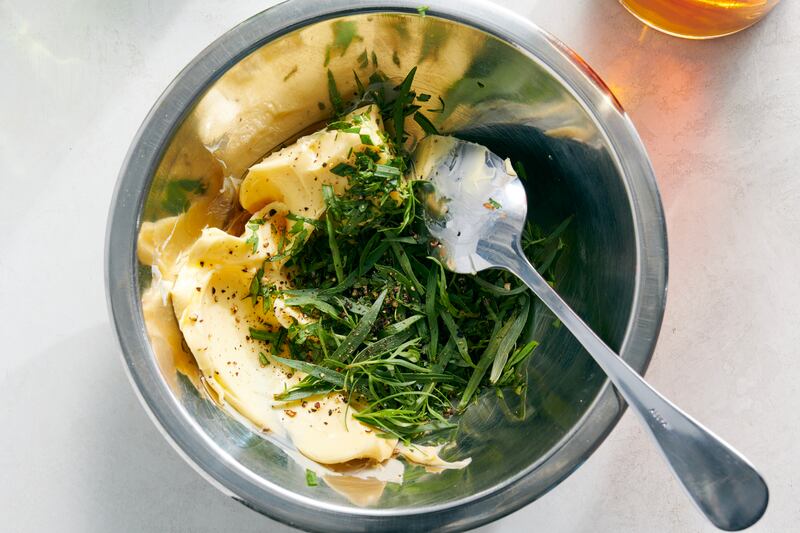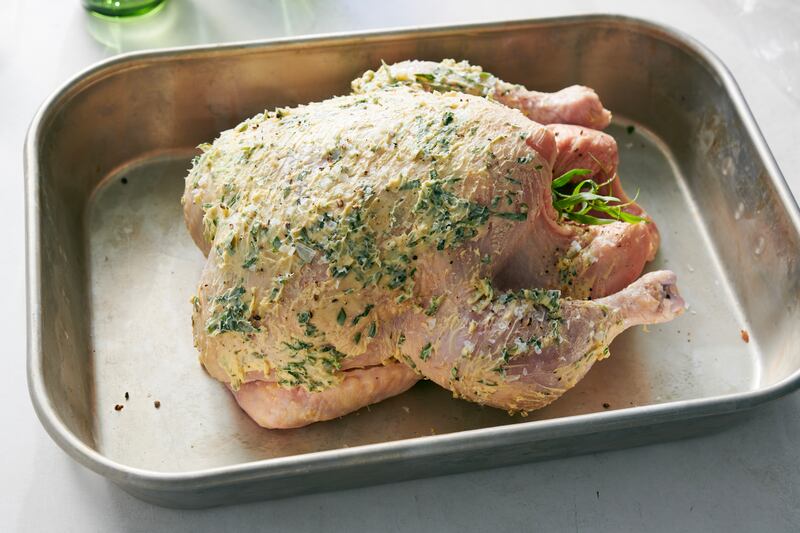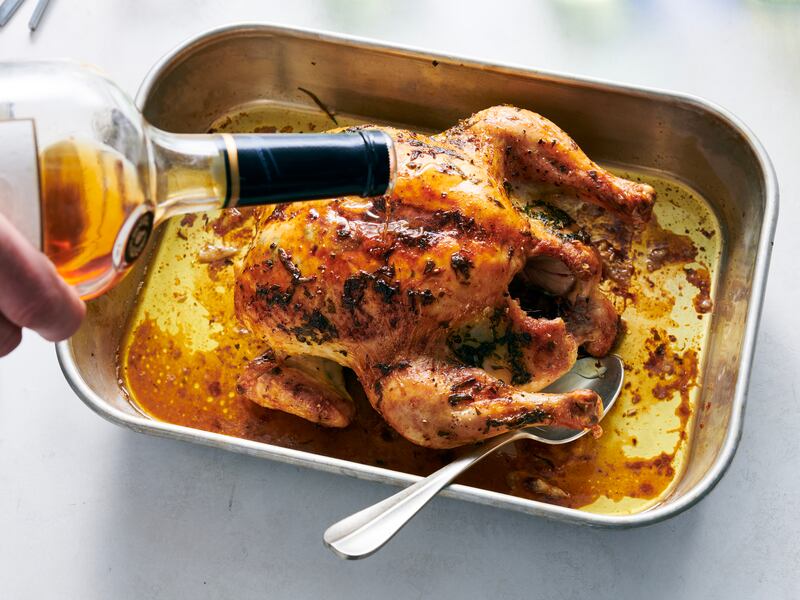Like little black dresses, you can never have too many roast chicken recipes. Especially the French kind.
So, when Florence Chapgier, a Paris-born New York Times reader living in Los Angeles, emailed me this recipe from her French mother, Christiane Baumgartner, for roast chicken with tarragon, butter and cognac, I immediately gave it a try.
Chapgier’s name for the dish, “French roast chicken,” conveys its origin but not its distinctiveness. The brilliance of the recipe is the alchemy between copious amounts of butter as it mingles with caramelised chicken juices, an entire bunch of fresh, liquorice-y tarragon and a heady dash of cognac.
The dish has so few ingredients that Chapgier recommends seeking out high-quality ones – a cornfed chicken (“like in the Southwest of France”), lavish V.S.O.P. cognac (“you don’t use that much”) and nubby, mineral-rich grey sea salt. I tested the recipe with a regular chicken, California brandy and kosher salt from my local supermarket, and it was still utterly phenomenal. So, use the best ingredients you can manage, but don’t sweat it.
The roasting technique itself could hardly be simpler: Salt the bird, let the skin dry out a bit, then coat it with softened butter and tarragon, and roast at 200 degrees. When the chicken is cooked through, turn off the heat and baste with the cognac and pan juices. Let it rest for 10 minutes in the cooling oven to absorb all the flavours, then carve, douse the meat and bronzed skin with plenty of buttery, schmaltzy, herby drippings, and serve.


Chapgier did have a note about adding the cognac. Turn off the heat before returning the booze-basted bird to the oven. The one time she forgot, the intense heat set the cognac on fire and cracked the glass in her oven door. (“That was a surprise,” she wrote.) This French bird, unlike coq au vin, is not improved by flambéing.
To round out the meal in the most classically French way, serve this with potatoes – roasted, fried, gratin or, best of all, mashed or puréed – so they can absorb every drop of the fragrant sauce. A bed of soft polenta is a less traditional but just as delectable alternative. Add a crisp green salad and nice bottle of wine, et voilà.
With roast chickens, as with little black dresses, simplicity is sophistication – and in this case, makes for a stunning meal.

Ingredients
- 1 whole chicken (2kg)
- 2 teaspoon coarse sea salt
- 6 tablespoons unsalted butter, softened
- 1 bunch fresh tarragon, leaves and tender stems coarsely chopped (40g)
- 2 tablespoons cognac
- 1 teaspoon freshly ground black pepper
Method:
1. Pat the chicken dry and salt the bird inside and out. Transfer to a plate or baking dish, preferably on a rack, and refrigerate uncovered for at least 1 hour or overnight.
2. When ready to cook the chicken, heat the oven to 200 degrees.
3. In a small bowl, combine butter, tarragon, 1 tablespoon cognac and the pepper. Rub mixture inside the chicken cavity and over and under the chicken skin.
4. Place chicken on a rimmed sheet pan or in a large, ovenproof skillet. Roast, breast side up, until the skin is golden and crisp, and the juices run clear when you insert a fork in the thickest part of the thigh, about 1 hour 20/30 min.
5. Turn off the oven – don’t skip this step, as you don’t want the cognac to overheat and catch fire – and transfer the pan with the chicken to the stovetop. Pour the remaining 1 tablespoon cognac over the bird and baste with some of the buttery pan juices. Immediately return the chicken to the turned-off oven and let rest there for 10 minutes before carving and serving.
This article originally appeared in The New York Times










